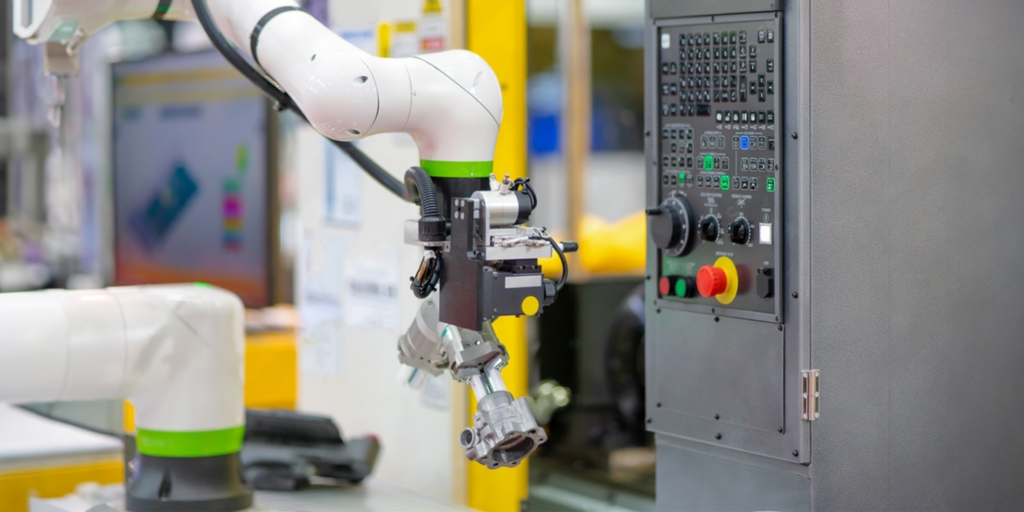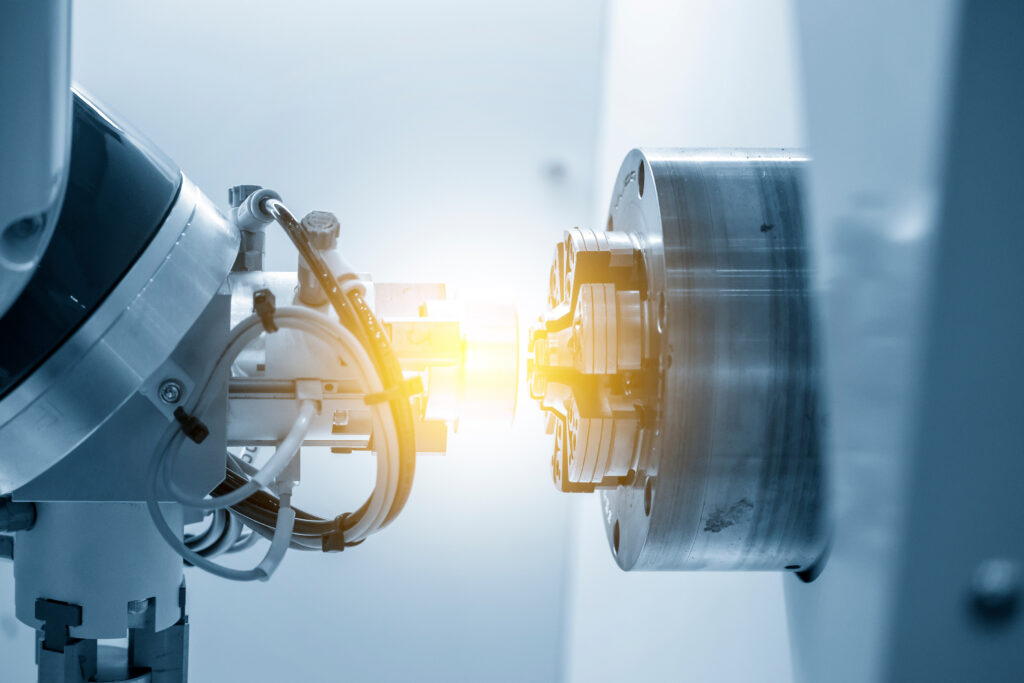You may also like:
The Ontario OEM Tool Supplier Advantage with RACER
Industry 4.0 and RACER: Driving Manufacturing Transformation
CNC Customization: The Potential of Manufacturing
How do engineers lead manufacturing robotics?
In the ever-advancing landscape of manufacturing, engineers are playing an increasingly pivotal role, one that aligns with the industry’s changing dynamics. It’s a role that not only involves designing and building CNC machines but also steering the charge towards robotics and automation.
In this thought-provoking exploration, we delve into how engineers are at the forefront of developing and implementing robotics and automation technologies in a world where precision machinery, such as CNC machines, is the heartbeat of the industry.
The Marriage of Precision and Automation
The Traditional Landscape
Traditionally, engineering has been associated with the meticulous design and construction of machinery, where precision and accuracy were the foremost objectives. The engineer’s role was to craft machines that delivered flawless performance, often in the form of CNC machines, the backbone of manufacturing.
The Changing Horizon
However, the landscape is evolving, and it’s evolving rapidly. The demand for efficiency, scalability, and cost-effectiveness has ushered in the age of robotics and automation. This is where engineers find themselves at the forefront of a revolution. Their responsibilities now encompass not only crafting the CNC machines themselves but also integrating them into a world of automated processes.
The OEM’s Journey
Original Equipment Manufacturers (OEMs) have traditionally been associated with creating high-quality machinery, often catering to specific industries. Engineers working for OEMs are tasked with creating CNC machines that seamlessly blend with automated systems, optimizing productivity and reducing human intervention.
Customization and Integration
Engineers in the CNC builder sector are not merely building machines; they are crafting solutions. Each CNC machine is designed with the vision of seamlessly integrating into an automated production line. CNC builders might specialize in creating machines for a specific industry, such as aerospace or automotive manufacturing.
The Future of Engineering Beyond Precision
As engineers redefine their roles, the emphasis has shifted from mere precision to a broader horizon. It’s about marrying the precision of CNC machines with the efficiency of automation. The engineer’s toolkit now includes software development, sensor integration, and real-time data analysis, allowing them to design CNC machines that not only produce high-quality components but also communicate, adapt, and optimize their own processes.
A Holistic Approach
The evolving role of engineers extends beyond the confines of their workstations. It’s about understanding the entire production ecosystem, from the CNC machine on the factory floor to the data analytics software in the cloud. Engineers working for CNC builders and OEMs are also customizing CNC machines to perform specific tasks, making them adaptive to the needs of industries that range from automotive manufacturing to precision engineering.
Challenges and Opportunities
The integration of robotics and automation into CNC machine systems brings a new set of challenges. Engineers must navigate complex systems, ensuring that automation enhances, not hinders, the precision and quality for which CNC machines are renowned. However, it’s not just about challenges; it’s also about boundless opportunities. Engineers have the canvas to innovate, pushing the boundaries of what CNC machines can achieve. The evolving role encourages creativity, problem-solving, and the development of systems that bring forth a new era of manufacturing.
The Impact on the Workforce
As the manufacturing industry increasingly adopts robotics and automation technologies, it’s essential to consider the potential impact on the workforce. While these technologies offer significant benefits in terms of efficiency and productivity, they also have the potential to displace human workers. Engineers must consider how to strike a balance between the benefits of automation and the need for human workers.
Conclusion
In the age of CNC machine building and OEMs, the role of engineers is undergoing a profound transformation. It’s a transformation that sees engineers not only as architects of precision but also as pioneers of automation and robotics. In this exploration, pondering the future of manufacturing, questions arise about how engineers evolve in a world where CNC machines and automation are inseparable partners.
Concluding, we anticipate the innovations engineers will lead, redefining precision and automation in CNC machine building and beyond.

